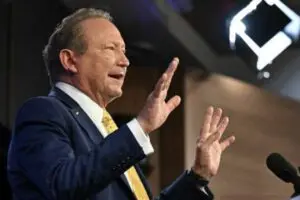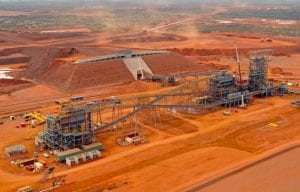The New South Wales state government has secured another $4.2 billion in wind, solar and long duration storage projects – all likely at relatively low cost to the consumer – in another strong result from the tenders being held to pave the path away from coal.
The latest tender results released on Tuesday deliver wins for Andrew Forrest’s Squadron Energy, the perennially successful Neoen Australia, and some remarkable new storage projects, including two giant eight-hour lithium battery projects, and the world’s biggest compressed air storage project in Broken Hill.
See also: World’s biggest eight-hour lithium battery wins NSW long duration storage tender
Squadron will now go ahead and build the previously foreshadowed but delayed 450 MW Uungula wind project near Wellington in the state’s central west, which had already won a PPA off take agreement with the federal government owned Snowy Hydro, and was supposed to start construction last year.
Neoen – which has built up a remarkable track record of tender and contract successes through the ACT, Victoria, Western Australia, Queensland and South Australia governments, will build the 350 MW Culcairn solar project between Albury and Wagga Wagga in the state’s Riverina region, that may also come with a big battery.
The long duration storage winers are also interesting, with pumped hydro once again missing out because they are not yet ready to compete.
In their place are two giant eight-hour batteries – one to be built by Ark Energy, a subsidiary of Korea Zinc, in the state’s north, and another by Lightsource bp at Merriwa in the upper Hunter Valley, along with Hydrostor’s previously announced Silver City compressed air storage project near Broken Hill.
The Ark Energy battery at Myrtle Creek in the Richmond Valley, south of Casino, will be sized at 275 MW with 2,200 MWh of storage, and would be the largest battery in Australia if completed now and quite possibly the largest eight hour lithium battery project in the world.
The 49 MW, 392 MWh Goulburn River battery being built by Lightsource near the town of Merriwa will also be sited near an existing transmission line, and next to a planned solar project, in this case up to 550 MW.
The Silver City compressed air storage project will be built at an existing silver mine, using mine shafts to create a large storage cavern, and will be sized at 200 MW and 1600 MWh, although some of that capacity has already been reserved to providing back up power to Broken Hill, replacing two ageing diesel gen-sets.

State energy minister Penny Sharpe says the tender result take the state to nearly half way towards its targeted 12,000 MW of new wind and solar capacity, and one quarter of its way to 2,000 MW of long duration storage needed to replace the ageing coal generators expected to retired in the coming decade.
A previous tender secured more than 1.39 GW of new solar and wind capacity (some already partly built), while another 1,075 MW and 2.98 GWh of shorter duration battery storage (and some demand management) was contracted in another tender that was expanded and partly paid for by a deal with the federal government.
“NSW is now almost halfway there on our 2030 renewable generation target, and over a quarter of the way there on our long-duration storage target,” Sharpe said in a statement.
“The Roadmap tenders are accelerating the transition to renewables, ensuring households and businesses have reliable access to clean and affordable electricity into the future, while providing jobs and other benefits in regional communities.”
There was no explanation as to why the generation tender fell just short of the indicative size of the tender (2,500 GWh of annual production) but the previous generation tender delivered more capacity than sought, even though some of it was partially built.
It may be a shortage of project options. Uungula was the last wind project to get planning approval in the state – in early 2021 – and there have been warnings that the state could fall short of needed capacity if more projects do not get the green light.
The generation tenders are offering what are known as Long Term Energy Supply Agreements (LTESAs), which are effectively a form of underwriting, or insurance, that removes some of the downside risk from projects and enables them to secure lower cost finance.
That will likely partially explain the delay in Squadron’s Uungula project, with the cost of finance increasingly important given the recent jump in wind energy costs due to supply shortages and competition overseas.
The project was to have started construction in 2022, according to a release announcing the Snowy Hydro deal at the time.
AEMO Services says the average LTESA between the two solar and wind projects was $55/MWh, which doesn’t represent a cost, but a floor that may well not be touched.
Both projects opted out of swap agreements in the first few years, largely because they were either contracted (Uungula) or in the case of Neoen’s Culcairn, forecast higher merchant revenues in the early years.
The newly announced projects – which must be built by 2028 – will unlikely have any impact on filling the gap for the closure of the next coal generator, the Eraring power station that is currently schedule to close in August, 2025.
That gap is being addressed, at least partly, by the three giant batteries at Orana, Liddell and Smithfield that will be built by the end of 2025, and that analysts say should be sufficient to fill that gap.
However, Sharpe has helped design rules – approved by other state and federal ministers – that will allow her to force a coal generator to stay open if a reliability gap is confirmed, and negotiations with the coal plant owner fail to secure an extension.
See RenewEconomy’s Big Battery Storage Map of Australia
And its Large Scale Solar Farm Map of Australia











